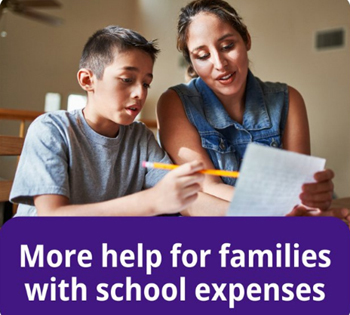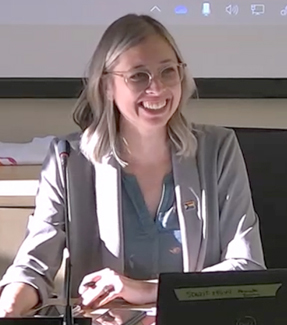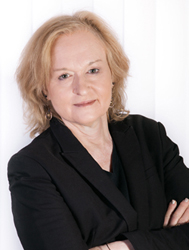Wednesday March 6, 2024 | LANGFORD, BC [Updated March 7, 2024]
by Mary P Brooke | Island Social Trends
Today $20 million was announced as a top-up to the BC Government’s Student Affordability Fund. The fund was first announced as $60 million ahead of the September 2022 start of school (for application through the 2022-2023 school year). This fund is being “replenished” almost all the way through the 2023-2024 academic year.
The announcement was made in person today over the noon-hour at the Centre Mountain Lellum Middle School in Langford by Education and Child Care Minister Rachna Singh. She was introduced by local MLA Ravi Parmar who was the local school board chair for nearly 10 years before shifting to provincial-level politics in 2023.
Sooke School District 62 (SD62) School Board Chair Amanda Dowhy also addressed the media session, after two Grade 8 students from the local school.
SD62 trustees in attendance today also included Cendra Beaton, Russ Chipps, Christine Lervold and Trudy Spiller. Parmar referred to Chipps (who is also Chief of Beecher Bay First Nation) as “his favourite trustee” … no lack of local politics in the west shore.
Minister Singh made reference to use of the funds for families needing additional clothes in cold weather, but mostly for sports-related equipment as well as school supplies.
She pointed out that school food program needs are funded separately through the Feeding Futures program. That fund was announced in spring 2023 as $214 million over three years.
Local MLA recently appointed within post-secondary:
Parmar was recently appointed to the position of Parliamentary Secretary for International Credentials, which is within the Ministry of Post-Secondary and Future Skills.
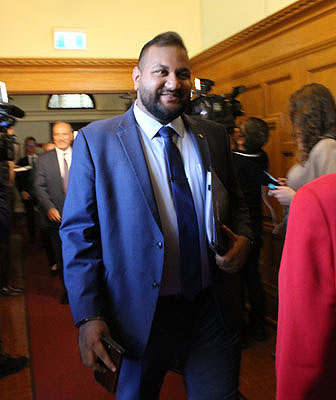
Student and Family Affordability Fund distribution:
Distribution of funds from the Student and Family Affordability Fund begins with the province issuing funds to all 60 school districts. The exact distribution process was vague.
The most specific description is this from the Ministry today: “All 60 districts will receive a minimum of $100,000, with some of the larger school districts receiving over $1 million to help families.”

School districts are expected to distribute the funds within the families of their school community based on apparent need and in a way that is ‘without stigma’ as was emphasized a few times today.
“The flexibility of the funding allows for school districts to put these support where they’re needed most to help students in their community,” says a Ministry spokesperson.
“While there is no requirement on when school districts must use this funding, districts recognize families who need more support for this school year and will be engaging with local First Nations and Indigenous organizations, parent advisory councils and other members of their school communities on how to use this funding to support students and families,” the Ministry said.
Reliant on school social infrastructure:
However this sort of distribution mechanism relies heavily on communications within school communities and filters through a structured hierarchy of committees and PACs. It doesn’t seem to include a failsafe that all families who need support will receive it or even know about it in a suitable way. While school leadership at all levels surely aims to do their best, this informal and internal mechanism leaves room for gaps.
Also, it a time when putting food on the table and paying rent or a mortgage or other debt commitments is of top concern to parents, today’s emphasis by the Minister on sport-related activity fees seemed to ring a bit hollow or narrow as examples of use of the fund.
Oddly, it was left to the two Grade 8 students who spoke to mention the grocery-store gift card option that some schools have used — not just for parents but also for teachers at the holiday season time.
While funding support is likely welcome across the board, there is the obvious truth in all this that families are struggling in an economy that has been unkind to many in the last several years.
Indeed, the Ministry today refers to the fund as a “targeted measure” that is intended “to help families who are most impacted by today’s cost of living and just one of the ways the Province is working to support families, so every child has what they need to participate and succeed in school”. There is the BC Family Benefit support (which was increased in Budget 2024) as well as this fiscal year’s BC Hydro affordability credit (amounting to about $100 per household over the course of 12 months starting April 2024), and the Renter’s Tax Credit of $400 which has started with the 2024 tax year.
School fees:
And while it’s certainly appreciated by those who get support for specific types of equipment or school fees, why are fees charged in the first place? School districts often use a range of fees to top up their operational budget needs.

Also, a sporting event, field trip or other thing might get covered, but none of this addresses the root causes of family poverty in our society — much of which is quietly suffered without being addressed in any concrete way.
That today the policy interest rate by the Bank of Canada didn’t budge from 5% will have had an additional chilling effect on families, businesses and communities that grapple with the cost of living crisis.
Minister’s visits to SD62:
Education and Child Care Minister Rachna Singh has made at least four visits to the SD62 school district that serves famliies with the delivery of public education in the Sooke/westshore region.
She toured Royal Bay Secondary School shortly after becoming the minister for K-12 education, and she attended an announcement with then-Premier Horgan and then-SD62-Chair Parmar at the SD62 school board office in March 2023 regarding school expansion in Port Renfrew.
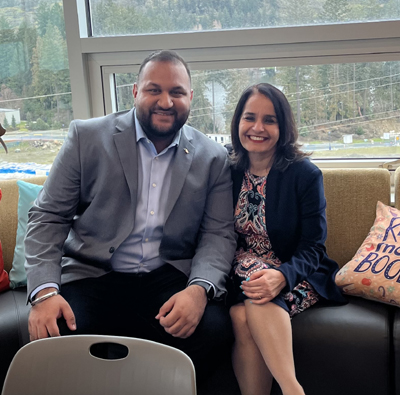
In October 2023 she attended an announcement held at Ruth King Elementary School in Langford, and now has returned to Langford to attend yesterday’s affordability supports announcement at Central Mountain Lellum Middle School.
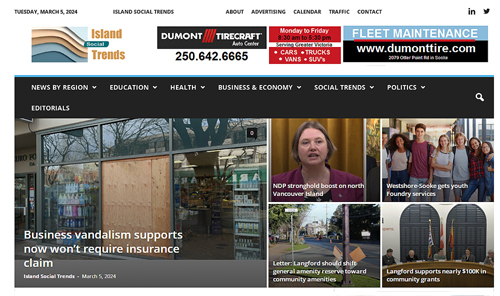
===== RELATED:
- “Right thing to do”: Budget 2024 to continue affordability supports (February 21, 2024)
- Beare, Chow & Parmar get new posts ahead of spring session (February 20, 2024)
- SD62 internal refresh for 2024 (December 20, 2023)
- Feeding Futures funding expands school food programs in BC (April 5, 2023)
- SD62 pitches for capital funds while struggling with enrolment growth (March 4, 2023)
- BC Budget 2023: affordability and investments, but three deficit years upcoming (February 28, 2023)
- Horgan & Whiteside on Fall 2022 education funding & growing school districts (August 30, 2022)
- Dealing with $3+ million shortfall in 2022-2023 SD62 budget (April 20, 2022)
- SD62 NEWS SECTION (by Island Social Trends)
===== ABOUT THE WRITER:
Island Social Trends Editor Mary P Brooke has been following news of SD62 at the board and committee level since 2014, and more broadly at the provincial level since 2018.
Her four children attended schools in SD61 and SD62. She ran for school trustee in SD62 in 2022.
Ms Brooke is the founder and editor of now four publications in series here on south Vancouver Island: MapleLine Magazine (2008-2010), Sooke Voice News (2011-2013), West Shore Voice News (2014-2020) and Island Social Trends (online since 2020, print as well since 2024).
After covering the daily news conferences about COVID during 2020-2022 she now reports with the BC Legislative Press Gallery.





